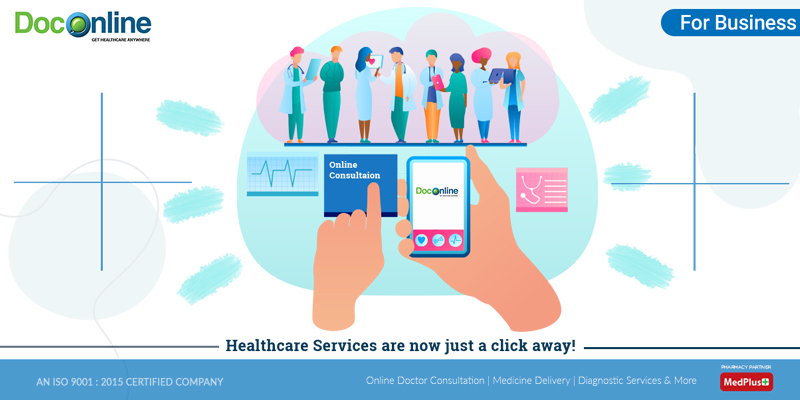Subscription Based Healthcare: Transforming the Way We Think About Health
Subscription Based Healthcare: Transforming the Way We Think About Health
Blog Article
Understanding the Cost-Effectiveness of Subscription-Based Medical Care Models
As the health care landscape evolves, subscription-based designs arise as a compelling option, assuring to redefine how individuals take care of medical expenditures. Evaluating these designs' cost-effectiveness demands a nuanced contrast with traditional insurance coverage, taking into consideration both monetary effects and patient complete satisfaction. While they use openness and predictability in costs, questions stay concerning their capacity to meet diverse health care requirements, specifically for specialized therapies. The viewpoints of doctor better complicate this formula, presenting a multifaceted challenge. What does the future hold for these models, and can they really provide on their pledge of obtainable, economical care?
Overview of Subscription-Based Models
Subscription-based healthcare versions, often referred to as direct health care or attendant medicine, are increasingly obtaining focus as a prospective service to inefficiencies within typical medical care systems. These designs operate the concept of offering individuals direct accessibility to doctor with a yearly or regular monthly fee, bypassing the demand for conventional insurance mechanisms. This setup intends to streamline patient-provider communications by decreasing management problems, which frequently hinder personalized and timely treatment.
At the core of subscription-based designs is the focus on a much more personalized individual experience. Clients take advantage of enhanced accessibility to their physicians, commonly consisting of same-day or next-day appointments, prolonged consultation times, and direct interaction channels such as phone or video telephone calls. This model promotes a proactive method to medical care, where service providers and individuals can collaboratively concentrate on preventative care and persistent condition management.

Expense Contrast With Typical Insurance

One of the main financial benefits of registration designs is transparency in prices. Alternatively, standard insurance might be a lot more helpful for individuals calling for specialized care or expensive therapies not covered under a membership model, as they profit from the wider coverage network and cost-sharing devices.
Nevertheless, cost-effectiveness is context-dependent. While subscription versions might use savings for those mostly needing medical care, individuals with persistent conditions or specialized health care demands may locate traditional insurance coverage more detailed. Examining details healthcare demands and prospective use is crucial in identifying the most economical alternative for individuals.
Impact on Client Contentment
Client complete satisfaction within subscription-based healthcare models usually mirrors a considerable enhancement over traditional insurance systems. Unlike typical systems, where individuals may experience delays in getting treatment, subscription-based versions make certain even more direct and prompt communications with health care companies.
Furthermore, the transparency in costs connected with subscription-based health care minimizes the common frustrations connected to unforeseen costs and complicated billing procedures seen in typical insurance policy (subscription based healthcare). Clients value understanding the specific monetary dedication upfront, resulting in raised depend on and self-confidence in their medical care management
In addition, the emphasis on precautionary care and wellness in registration models adds to improved health and wellness end results, even more boosting client contentment. By focusing on continuous health care instead than anecdotal care, clients experience an even more continual and holistic health care trip.
Furthermore, the enhanced provider-patient connection cultivated in these models, characterized by more time spent per patient and individualized attention, plays a vital role in elevating client fulfillment degrees, as patients feel really taken care of and recognized.
Provider Point Of Views and Experiences
From the supplier's point of view, subscription-based medical care models provide a transformative technique to providing clinical solutions. These versions emphasize a proactive and preventative healthcare technique, allowing suppliers to concentrate on extensive client care without the restrictions of conventional fee-for-service arrangements (subscription based healthcare). This shift in emphasis often results in boosted person end results and boosted you can look here supplier contentment, as health care experts can assign more time and sources to individual interaction and personalized care strategies
Additionally, membership models promote foreseeable income streams, which enhance economic stability for healthcare providers. This predictability enables enhanced resource preparation and allowance, adding to an extra effective healthcare distribution system. Companies can invest in team modern technology, training, and facilities improvements, consequently enhancing the high quality of care used.
Nonetheless, the transition to subscription-based models is not without difficulties. In spite of these difficulties, several providers find that the benefits of enhanced individual communication and structured procedures exceed the preliminary obstacles, making subscription-based versions an eye-catching alternative.
Future Leads and Obstacles

A main challenge is regulatory compliance, as subscription versions have to stick to evolving healthcare plans and insurance coverage requirements. This demands constant adaptation and technology to guarantee alignment with lawful standards. In addition, integrating these versions into existing health care facilities can be complex, requiring significant financial investments in innovation and training.
There is likewise the potential threat of creating inequities in health care accessibility, as membership models may favor those that can afford them, leaving at risk populations underserved. Addressing this needs thoughtful consideration of pricing Full Article approaches and subsidy devices to ensure inclusivity.
Final Thought
Subscription-based medical care designs offer a practical option to traditional insurance coverage by offering monetary predictability and openness, specifically profiting individuals with chronic problems or constant healthcare needs. The cost-effectiveness of these designs rests upon specific healthcare usage patterns and scenarios. While they might boost patient complete satisfaction and enhance budgeting, obstacles remain in dealing with specialized care requirements. Future factors to consider consist of stabilizing thorough insurance coverage with affordability and integrating these models within the broader health care system for ideal results.
Subscription-based healthcare versions, occasionally referred to as straight main care or concierge medication, are significantly getting interest as a prospective service to inefficiencies within typical medical care systems. Unlike standard systems, where clients might experience hold-ups in obtaining care, subscription-based models make certain even more direct and timely communications with medical care suppliers.
These designs emphasize a preventative and positive healthcare approach, enabling service providers to focus on detailed client treatment without the restrictions of traditional fee-for-service setups. As these designs proceed to acquire grip, they use the potential to reinvent client accessibility to care, improve solution delivery, and maximize healthcare investing.Subscription-based healthcare versions present a feasible alternative to standard insurance by using financial predictability and transparency, specifically benefiting people with persistent conditions or regular healthcare requirements.
Report this page